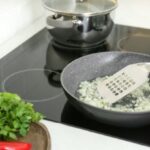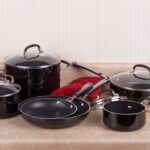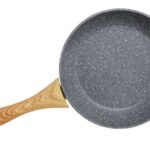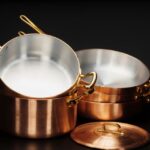Is Glass Cookware Good for Cooking?
Glass is considered one of the safest materials for cooking, and storing food. It’s good to know that your cookware doesn’t contain any chemicals or toxins that can leach into the food cooked or stored in it. You can cook tomato-based sauces and soups in glass cookware as it doesn’t react with acidic foods. The transparent glass allows you to watch your vegetables or pasta as they cook on the stove. The glass is also non-porous and easy to keep clean. The glass is also non-porous and easy to keep clean. In addition, the glass cookware is a real eye-catcher and you can cook, serve, and store food in the same bowl. In summary, these are some of the reasons why glass cookware might be a good fit for your cooking needs.
Is Glass Cookware Food Safe?
Glassware is considered safe for food contact because the non-porous glass surface does not leach chemicals into food. The exception is glass painted with bright pigments, which is produced in countries where there are no strict production standards. Such items may contain lead and other heavy metals. That’s why you should buy glass cookware and bakeware from well-known manufacturers. Never use decorative glassware of unknown origin for cooking and storing food.
Can You Put Glass Cookware on the Electric Stove?
Ordinary glass breaks when exposed to high heat or sudden temperature changes. Cookware made of heat-resistant glass is suitable for preparing liquid dishes on the electric stove. When cooking in a glass pot, use low heat settings to prevent food from burning. Glass heats up more slowly than metal, but once heated, it retains heat for a long time.
Borosilicate glass can withstand temperatures up to 572°F and can be used to cook food on the stove. A good example is a large selection of stovetop-safe teapots made from borosilicate glass. However, borosilicate glass takes a little longer to heat up, so cooking on the stove takes longer than with metal cookware.
The type of glass best suited for stovetop cooking is Pyroceram glass. This type of glass is not only resistant to high temperatures but also reacts quickly to temperature changes, so you don’t have to wait long for your meal to warm up.
This post contains links to Amazon. The publisher may get paid if You purchase something through the links without additional costs to You.
Can You Use Glass Pots on a Gas Stove?
Manufacturers often describe their borosilicate glass cookware as suitable for use on a gas stove. However, it would be best if you did not place this cookware on an open fire for a long time. Also, be sure to turn down the heat and never leave food unattended. There have been many cases of cracks in borosilicate pots, whether on gas or electric stoves.
Pyroceram, a unique combination of glass ceramic, is more resistant to temperature fluctuations than borosilicate glass. Pyroceram cookware can be used on a gas stove or burner as well as on an open flame.
Corningware Pyroceram cookware is suitable for electric and gas stoves. This cookware retains heat for a long period and cooking continues for a while after the gas is turned off.
Visions cookware is highly resistant to thermal shock and works flawlessly on both electric and gas stoves.
Can Glass Cookware Go in the Oven?
Items made of ordinary glass should not be placed in the oven, as untreated glass cannot withstand high temperatures. Glass is treated to increase its resistance to high temperatures. This type of glass, called tempered glass, can be placed in the oven.
When purchasing glass cookware, look for the oven safety symbol or read the instruction manual carefully to make sure it is safe to place in the oven.

Pyrex glass cookware can be placed in the oven at up to 425°F but sudden temperature changes can cause the glass to crack. Recently, Pyrex bakeware has been made from soda lime glass, which is not resistant to thermal shock. This means that you should never immerse a hot vessel in cold water. Allow the cold casserole dish containing the food to come to room temperature before placing it in the oven. Also, allow the hot casserole dish to cool to room temperature before placing it in the refrigerator.
Bakeware made of borosilicate glass is heat resistant up to 542 °F and has a high thermal shock resistance. Borosilicate glass retains heat for a long time and is ideal for baking in the oven.
Pyroceram glass cookware is very temperature-resistant and can be safely used in the oven.
CorningWare Glass-Ceramic Pyroceram Round Classic Casserole
Can Glass Go in the Microwave?
It’s always good to check if your cookware is marked as microwave-safe before using it in the microwave. Microwave-safe glass is made to withstand electromagnetic waves, allowing you to cook or reheat food in the microwave. Unsafe glassware can explode in the microwave and ruin your meal or even damage your appliance.
Brands of microwaveable glassware include Pyrex, Anchor Hocking, Corningware, and Visions. However, be sure to look at the bottom of your cookware for a microwave-safe symbol.
Glassware with silver or gold rims or metal parts is not suitable for the microwave.
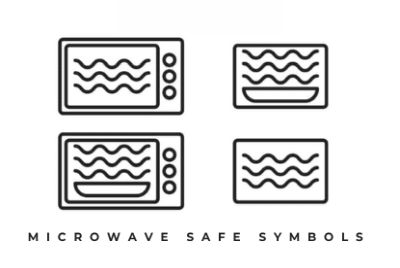
Can You Microwave Cold Glass?
VISIONS cookware and Corning Ware cookware made from Pyroceram glass have a high tolerance to temperature fluctuations. According to the manufacturer’s description, these two brands can go straight from the fridge or freezer into the microwave.
Be careful with other types of glass and never put frozen items in the microwave. Let it thaw first before putting it in the microwave. Also, use low heat when heating cold glass in the microwave.
CorningWare French White 4-Quart Covered Casserole
Can Glass Cookware Go in the Dishwasher?
Glass cookware is dishwasher safe in most cases, but always check the manufacturer’s instructions before placing the dishes in the dishwasher. Glass is a fragile material and can break during the wash cycle. Another problem is that washing glass cookware in the machine can leave water stains on the surface. Cookware made from durable Pyroceram glass (Visions and Corningware cookware) is more shatterproof in the dishwasher compared to other types of glass cookware.
How to Handwash Glass Cookware?
Glass cookware should not be left standing for too long before washing. It would be ideal to wash it after each use, once the cookware has cooled down. If you choose to hand wash, warm soapy water and a soft sponge are all you will need for regular washing.
How to Clean Burnt Glass Pan?
Glass cookware is not non-stick and food can stick to the bottom, especially if you use medium or high heat. Allow the cookware to cool completely and then soak it in soapy water. In most cases, cleaning after soaking is not a problem.
If the burnt residue still sticks, sprinkle the cookware with baking soda. Scrub the burnt areas with baking soda and a damp sponge. Repeat if necessary. Rinse with water.
To remove unsightly burnt-on grease from your glass bowl, combine baking soda with a degreasing dish soap. Allow the mixture to sit on the yellow spots for an hour. Then soak the cookware in hot water for about 15 minutes before scrubbing. Use a nylon scouring pad to scrub the stubborn spots. If the stains remain, add more baking soda and continue scrubbing until the dirt is gone.
So, Is Glass Cookware Good for Cooking?
Glass cookware is food-safe, versatile, and visually appealing. However, glass is fragile and there is no such thing as unbreakable glass. So weigh the pros and cons and consider your personal preferences. If you need cookware for preparing water-based meals on the stove, look for items made from Pyroceram glass. Both borosilicate glass and Pyrex (made from soda lime glass) work well for baking. Buy your glass cookware from reputable sellers and never buy cheap items from unknown brands.
